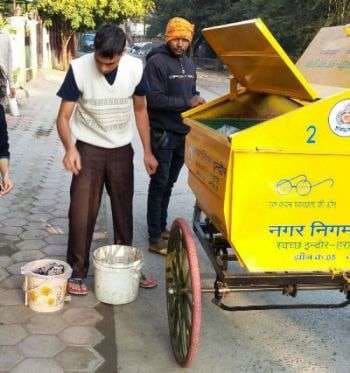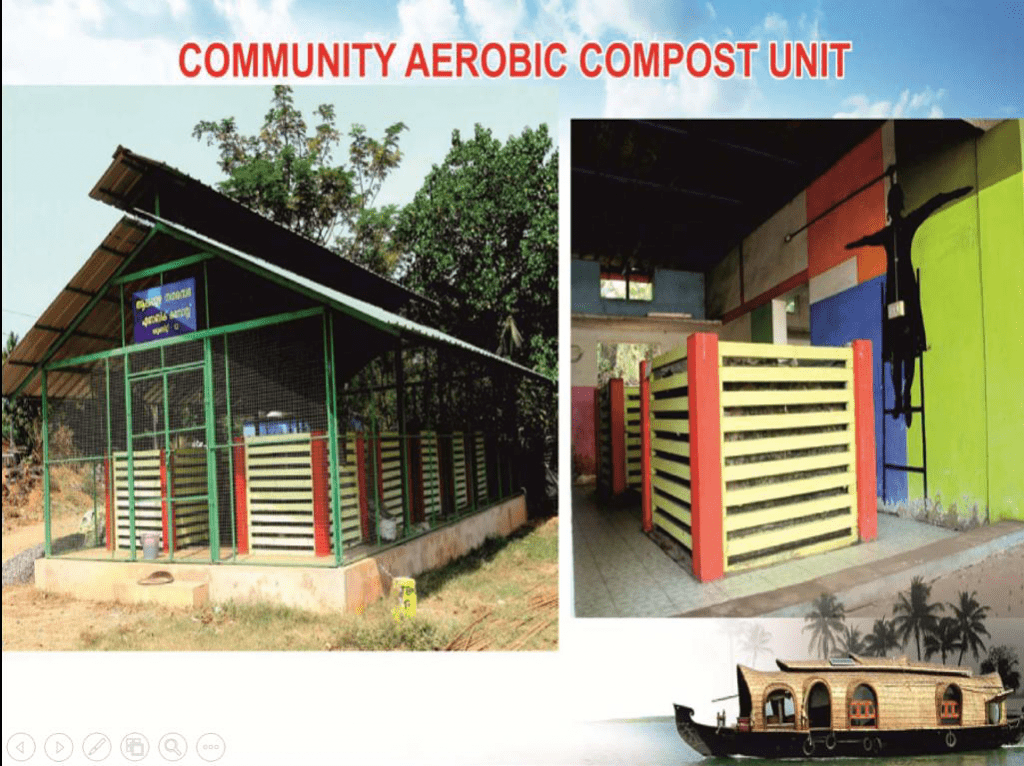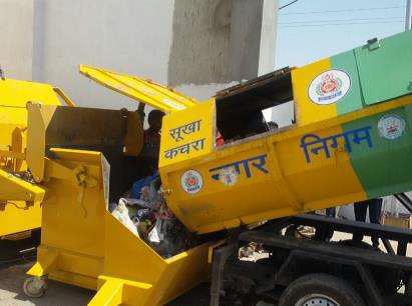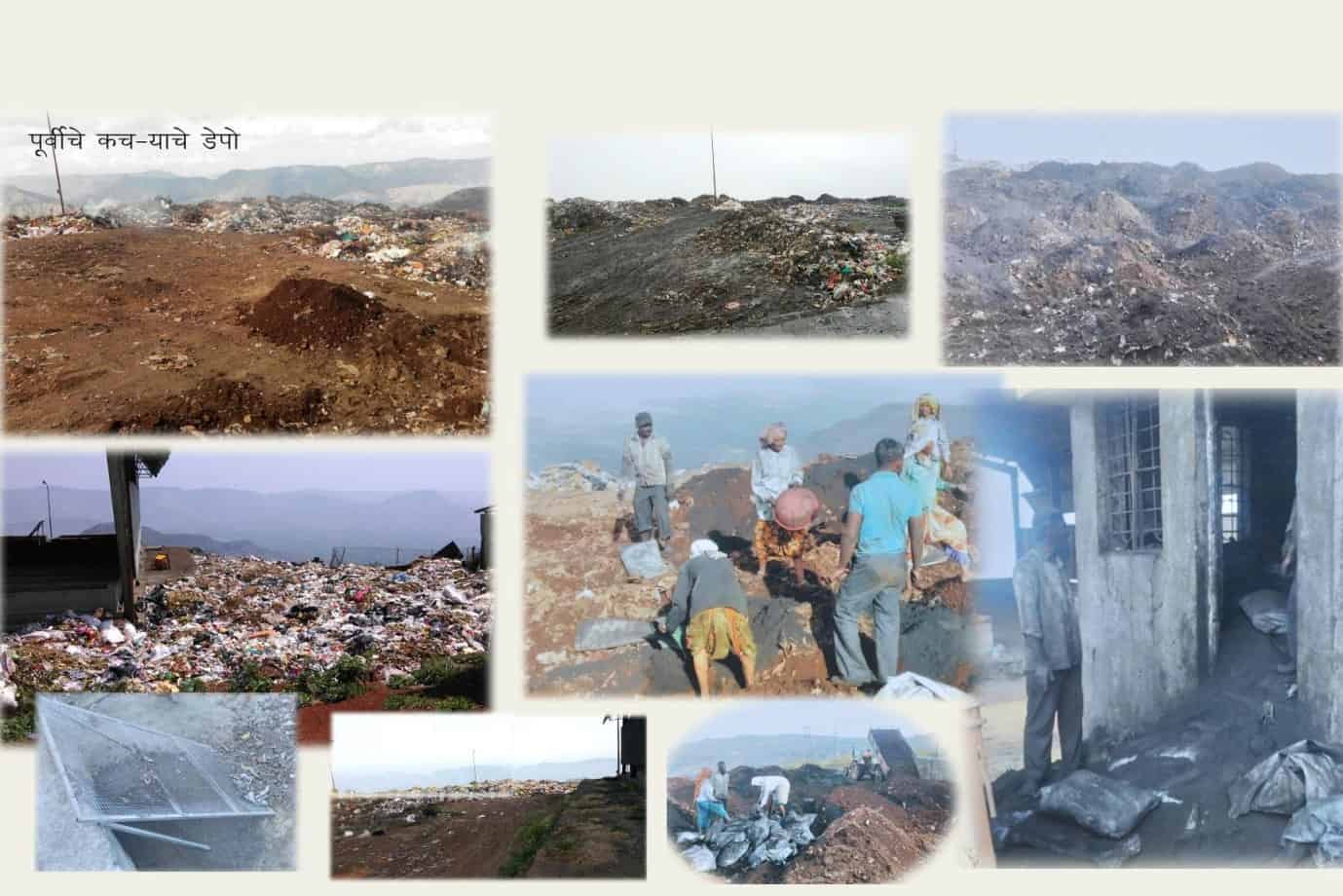Despite five years of a Public Interest Litigation (PIL) in the Karnataka High Court and hundreds of court orders, Bengaluru is way behind several other cities in the country in managing its garbage and is living up to the epithet it has earned: ‘garbage city’.
Except for a few wards where some good work may be happening, one hardly sees any change on the ground in most areas. In the meantime, several other cities have moved far ahead of Bengaluru in managing their waste. No wonder Bengaluru fell to a position below 200th in the Swachh Bharat Survekshan last year.
A review of good practices followed by 20 cities was presented at a media briefing organised by the Centre for Science & Environment recently. The 20 cities have been formed into a “Forum of Cities that Segregate” to share information and learn from one another. There are several angles here that Bengaluru needs to deliberate upon and learn from.
Household and community-level processing of wet waste
Take Alappuzha or Alleppey, which has been adjudged as one of the five cleanest cities by the United Nations Environment Programme (UNEP) or Indore, which has been adjudged the cleanest city in India in the last Swachh Bharat Sarvekshan; both have chosen two diametrically opposite but effective paths to become the cleanest cities.
Alappuzha and Trivandrum have not gone for door-to-door collection as the solution, which they find impractical and cumbersome. They have instead a most rational and sustainable system in place. They have gone in for distributing bio-gas plants or compostors to households motivating them to segregate and process waste themselves, so that there is no need to collect wet garbage at all. However, this is not mandatory.
The onus for investing in this processing infrastructure is not on the households but is highly subsidised by the municipality, to the extent of 75% to 90%. This way, the municipality is not abdicating its obligatory responsibility of meeting the cost of garbage disposal.
This has led to 80% of residents of Alappuzha segregating their waste. 60% of households in core Trivandrum have their own wet waste processing facility. 40% LPG can be saved at the household level by installing a 2-kg capacity bio-gas unit. Hotels, shops and slaughter-houses have contracts with private parties, such as piggeries etc.
For those unable or unwilling to process their wet waste themselves, Community Aerobic Composting Units have been set up in Alappuzha and Trivandrum where the citizens themselves deposit their wet waste.
Indore, on the other hand, has stuck to enforcing door-to-door garbage collection, but with hygienic and efficient infrastructure. Sleek-looking door-to-door collection vehicles have closed tops so that no garbage is exposed to the environment. Garbage is deposited through flaps on the sides so that there is minimal visibility of the garbage to the public and minimal stink.
 The vehicles have separate compartments for collecting wet and dry waste so that there is no mixing of waste. Each compartment is tipped separately into the compactor without dumping the garbage on the ground or lifting it manually. A separate bin with a lid is placed behind the vehicle to collect sanitary waste.
The vehicles have separate compartments for collecting wet and dry waste so that there is no mixing of waste. Each compartment is tipped separately into the compactor without dumping the garbage on the ground or lifting it manually. A separate bin with a lid is placed behind the vehicle to collect sanitary waste.
Bengaluru’s aversion to bins and inadequate infrastructure
In Bengaluru, there has been strong resistance to setting up any kind of community bins on the ground that people would throw only mixed waste, that too around the bin and not into them. If residents of Alappuzha can be trained to deposit only wet waste into the composting unit properly, why cannot Bengalureans be trained in a similar way?
This fetish for not having secondary storage containers is the reason why there are so many black spots spread across 100 feet or more, many created by BBMP itself at collection points. If not secondary storage containers, why not place community aerobic composting bins as in Alappuzha and solve the problem once and for all?
In Indore, 2000 twin litter-bins were placed in commercial areas. But with the aversion to bins propagated by BATF at the time of the Swachh Bengaluru launch in 2002, there are no litter bins even in commercial areas in Bengaluru, except for a few on TenderSure roads. So you are expected to carry the stick of the ice-cream and the peel of the banana that you ate in your pocket, till you reach home! The small town Panchgani has insisted that each shop have two colour-coded bins, but even this has not been imposed by BBMP.
To make matters worse, Bengaluru’s infrastructure for door-to-door collection is also pathetic. Auto-tippers with no lids or flaps or compartments move around collecting loose, stinking and mostly mixed garbage, exposing the mess to the public and the environment. Gangmen stand on this stinking mess, manually picking out what can be sold to the raddiwalla.
The less said about the push-carts used by the pourakarmikas, the better. These are probably decades old with rusted wheels. Most of them have no bins or broken bins covered with the grime of many years. Many of them have reed mats slung across the push-carts in place of the bins on which only mixed waste can be carried.
Convenience and flexibility
For dry waste, Alappuzha and Trivandrum have opened Material Recovery Centers. Both the wet and dry waste centres are within accessible distances of households so that they can go and deposit their wet or dry waste at any time convenient to them. This precludes the need for the households to meet the door-to-door waste collector at a fixed time each day.
Other cities have a calendar for collecting different kinds of dry waste, in contrast to Bengaluru. Trivandrum has also published a dry-waste collection calendar when only particular kinds of dry wastes are collected. In Bengaluru, one will find broken commodes and sofas, torn reed mats and carpets deposited any time, anywhere, as there is no calendar for collecting even such bulky items.
Failed decentralisation in Bengaluru
Both Trivandrum and Alappuzha have done away with the need to transport garbage over long distances as it is processed in a most decentralised fashion. Indore has set up 1,000 wet waste management centres within two years.
In contrast, though the High Court of Karnataka directed BBMP in 2012 itself to set up local processing units for garbage within four months, this is yet to be implemented. Even the few bio-methanisation plants that were set up are dysfunctional for various reasons, prompting the High Court to reiterate its orders in November 2017.
One of the reasons for the processing units becoming dysfunctional is the delay in payments by BBMP. V. Ramprasad, an SWM expert, says that, in some cases, the investment cost for a bio-methanation plant has been jacked up so much that the vendor has made a huge profit on his investment, along with the subsidy given, even without running the plant. So, having made his profit, he is no longer interested in running the plant and just wants to pack up and leave!
Rather than start small local processing units as in Alappuzha or Indore, those in power in Bengaluru are interested in starting huge waste-to-energy plants which incinerate mixed waste at highly inflated costs of up to Rs. 250 crore. Ramprasad points out that MoUs have been signed by the state promising to buy electricity from such plants at more than Rs. 10 per unit when the going rate even for solar energy is around Rs. 5. And there is every likelihood that the investor, having got his profit, would not run the plant at all, and the city would be left with its garbage, and not even get the promised electricity as well!
Accountability of government offices
Trivandrum has prescribed a “Green Protocol” for all government offices to implement. Compare this with Bengaluru where the Multi-Storeyed (MS) Building — office of most secretaries to the government — and the Education department have open brick and cement garbage dumps with mixed waste exposed to the environment.
Further, no segregation of wet and dry waste at source happens at many events organised by the state government and BBMP, or even in the dining hall of the BBMP Council itself. Banned one-time-use items, such as plastic cups and spoons are used at these events with abandon!
Capacity to transport and handle segregated streams of waste
Indore Municipal Corporation (IMC) is constructing nine modern transfer stations where hydraulic mounted compactors with 15 MT capacity are capable of collecting waste transported by 15 tippers. The transfer happens completely mechanically. The contents of the separate compartments for dry and wet waste in the tipper vehicle are transferred separately into different vehicles so that there is no mixing of the segregated waste.
Contrast this with what happens at most collection points in Bengaluru. The entire mess of loose mixed waste is very often dumped on the ground at collection points and then shovelled manually into leaking bamboo baskets, and dumped into the compactor. The compactor moves leaking the leachate to the ground. The stink of the garbage remains for hours at the collection point and the compactor leaves a furlong-long trail of stink as it moves.
Sources say that though segregation at source is happening up to 65% in Bengaluru, the quantity of segregated waste reaching the processing plants is a mere 15%, indicating that mixing is happening after the waste is collected because there is no system and infrastructure for collecting waste in a segregated manner. Neither are there two different streams of collection, one for wet and another for dry, with separate vehicles and manpower, nor are there separate compartments in the tipper vehicle to collect the waste in segregated fashion.
“Separation of waste is very important, but it’s only one part of the story,” said Swati Sambyal, a program manager at the Centre for Science and Environment in New Delhi. “Most of the Indian municipalities don’t have enough manpower, vehicles, infrastructure and revenue to support segregation.”
The surprising thing is that the Expert Committee on SWM advising the BBMP has never drawn attention to this lack of infrastructure in BBMP to collect garbage in a segregated and hygienic way or follow the MoEF Rules. They have concentrated on making citizens buy composting equipment to compost at home with no subsidy from the BBMP for doing this. In effect, they are allowing BBMP to abdicate its obligatory function and turned a blind eye to BBMPs failings. Why this is happening is anybody’s guess.
Disposal of Construction and Demolition (C&D) waste
In Indore, two centres have been established for storage and transfer of construction & demolition waste. Citizens can call the number 18002331311 or use the Indore 311 app for lifting of C&D waste on payment basis. Tender has been invited for setting up of a plant that would convert C&D waste into bricks, pavers, blocks etc.
In Bengaluru, while a few centralised dumping grounds have been identified for C&D waste, no helpline has been notified for lifting C&D waste on payment basis. So should the small householder who has renovated his one bathroom arrange a lorry to take the basin full of waste generated, all the way to the centralised dumping ground?
Mayors and officials go around castigating those dumping their C&D waste at night by the roadside or in storm-water drains, instead of setting up a system to help generators of small amounts get rid of such waste at nominal cost.
The menace of stray cattle
Around 22,000 to 25,000 stray cattle and approximately 50,000 pigs have been removed from Indore city. But in Bengaluru, thousands of so-called sacred cows chew on garbage languidly, shaking it out of plastic bags with their mouths, while citizens look on fondly and complacently. Some citizens even throw vegetable peels on pavements hoping a passing cow will eat it, adding to their ‘punya’.
The importance of penalty
Indore’s success can be attributed to a large extent to the strict spot fines collected aggressively, if any person is found littering. Panchgani has been putting photos of litterers on Whatsapp. Bengaluru, in contrast, has been famous for its laxity in fining any resident, even when they are found littering or mixing waste.
Dealing with accumulated waste mounds
The small hill station of Panchgani has flattened its historic mountain of garbage and created a green garden in its place. It bio-mined the top 20 feet of the mountain and found that the wet waste underneath had already turned into manure and the manure had to be merely sieved in order to remove the plastic that remained intact. The area has been named “Swachh Bharat Point” and has become a tourist spot, in fact.
In Indore, scientific waste processing and bioremediation of 2 Lakh MT of waste dumped on 5 acres have been taken up.
But the mountains of mixed waste in Mavallipura and Mandur near Bengaluru, which had triggered the PIL in the first place, are still standing as monuments to the city’s governance failure. For 5 years, Special Commissioners in charge of solid waste management of Bengaluru have been telling the Court that “tenders are being issued” to bio-mine the mountains. But the mountains have not melted even by an inch. Several such garbage dumps have caught fire on their own and falling garbage from one such has even killed a foraging rag-picker.
Collection of loose garbage a health hazard
One critical lacuna in the MoEF SWM Rules is that it does not ban collection of loose garbage, which no country in the world allows. Garbage in all other countries has to be bagged and sealed so that none of it can fly around and let loose bacteria into the air, causing a public health hazard. Or, it has to be stored in a lidded bin and emptied mechanically into a collection vehicle without exposing the garbage to the environment or making it visible to the public at any time. This is the reason one never sees open garbage in other countries.
In Bengaluru, by contrast, the garbage is neither bagged nor lifted mechanically. The resistance to bags, even those made of bio-degradable vegetable material, comes from self-styled environmentalists, who do not understand that the cost of collecting loose garbage and thus polluting the air with bacteria is much more than that of composting or recycling a few bags.
When this was pointed out to the Additional Mission Director, SBM, Naveen Kumar Agarwal, he said that India was still in the early stages of learning to manage its garbage and that it would take time before we reached the level of other countries.
Bulk generators vs others: An opening for scams
Another lacuna in SWM Rules arises from the differentiation between individual houses/commercial units and bulk-generators (apartment blocks, hotels, etc.). This means garbage from bungalow owners living in plots measuring 4000 sq. ft. would be collected by the municipality, but apartment-dwellers living in 1000-sq.ft. flats have to pay additionally to empanelled vendors to collect their garbage or process it themselves.
It is not clear why this distinction has been made, as even apartment owners pay property tax and solid waste management cess at the same rate as individual house-owners. Hotels and other commercial entities are already paying a higher rate of property tax and solid waste management cess.
Asking bulk generators to manage their own waste is equivalent to the municipality abdicating its obligatory function of garbage disposal. If all individual residences/commercial units get converted to high-rise buildings one day, will the municipality stop collecting garbage completely in that city?
This dichotomy has resulted in a big scam in Bengaluru. Vehicles meant to collect waste from individual residences/commercial units are being used by contractors or even health officials to collect garbage from bulk generators first as they could collect additional charges from them. The other areas are neglected.
These contractors ultimately transfer the bulk-generated waste to the same municipal compactors and take them to the processing or dumping site without processing these separately.
Political will and support
An important factor in the success of Alappuzha and Indore has been the political will shown, and support provided, by the elected representatives of these cities. Many elected representatives in Bengaluru, in contrast, were actively hindering the efforts of NGOs and activists to promote segregation at source by sending their henchmen to threaten them.
The reason: Any reduction in the amount of garbage transported out of the ward through local processing of wet waste and recycling of dry waste would directly hit the commissions they were receiving from contractors, whose payment depended on the distance they transported the garbage and the weight of the garbage they unloaded at the processing plants or landfills.
Unless this incentive structure, which rewards mixing of waste and transportation to far off places, is reversed, the nexus between contractors, officials and elected representatives will continue to thwart segregation at source and local processing.
Given all the loopholes discussed, can Bengaluru hope to achieve a higher ranking this year in the Swachh Bharat Survekshan?
[Pic credits: All photos have been sourced from the presentations made by officials of the urban local bodies of the respective cities at the CSE Forum and can be found here]




It is true that Bengaluru needs better management of the garbage situation. But it is absurd to compare the gigantic megacity of Bengaluru with Alapuzzha, Indore etc which hardly has 15% of Bengaluru’s population and urban sprawl.
Distributing bio-gas plants to individual houses? Bengaluru has approx 20 lakh properties. Is this even feasible?
The above proposed solutions are applicable to small cities with approx 25 lakh population.
To have a fair comparison, compare Bengaluru with Mumbai and Delhi.
Bengaluru needs waste to energy plants to reduce the garbage output as the bio-gas plants/bio-fuel plants/organic manure plants are not scalable.
Bengaluru generates approx 5500 tonnes of garbage eveeryday. We cant have a system that shifts the garbage from one place to another but reduce the garbage to sent ot landfills overall.
Thanks for writing this article, each and every loopholes discussed herewith are too good. Our Bangalore city has become garbage city this is all because of BBMP SCAM, Bangalorean will adopt to each & every rules /measures that are implemented.
first of all plastic covers, glass, spoons, plates should be strictly banned, as mentioned in this article Loose Garbage disposed by residents should be bagged and sealed and Push-carts used by the pourakarmikas should be replaced by vehicles having separate compartments for collecting wet and dry waste & sanitary waste with lids and Community Aerobic Composting Units to be set up like in Alappuzha and Trivandrum where the citizens themselves deposit their wet waste. Just these simple steps if the BBMP takes up in implementing our half of garbage problems will be resolved.
NICE ARTICLE – KEEP WRITING
Aleast now BBMP should wakeup
Bangalore urgently needs environment planning.
New Bangalore appears to be environmentally most unplanned city in modernday India. Waste management system has failed and drains are clogged with debris. More flooding situation in city area.
Water bodies are ill-treaed both by state and developers. We are traveling in Alleppey Trivandrum and Kovalum and these places are very clean and looks pleasing than Bangalore, which is now turned into a GARBAGE CITY .
Both State / Municipality and people have to implement appropriate mitigation and enhancement measures and make the city clean and nice.
Amazing article. Extremely informative and an eye opener. Thanks.
“Namage Eshtu Bharathe?” “How much is there in it for me?”
As long as this is the main and only criterion for choice in any matter, whether it is waste disposal, public transport system, city-planning, footpath paving or just about anything else, as it is under the present Govt. Bengaluru will continue to wallow in its own refuse. And worse, dump it all out on the roads and fields leading out of and in to this city.
The Boards on the highways should read ” BENGALURU NARAKA” and not “BENGALURU NAGARA”.